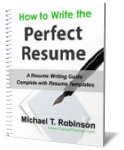"Aircraft Mechanics and Service Technician"
Job Description - Part 1 - Duties and Tasks
Basic Job Description:
Diagnose, adjust, repair, or overhaul aircraft engines and assemblies, such as hydraulic and pneumatic systems.
Part 1
Duties / Tasks
Part 2
Activities
Part 3
Skills
Part 4
Abilities
Part 5
Knowledge
Job Duties and Tasks for: "Aircraft Mechanics and Service Technician"
1) Assemble and install electrical, plumbing, mechanical, hydraulic, and structural components and accessories, using hand tools and power tools.
2) Check for corrosion, distortion, and invisible cracks in the fuselage, wings, and tail, using x-ray and magnetic inspection equipment.
3) Clean, refuel, and change oil in line service aircraft.
4) Conduct routine and special inspections as required by regulations.
5) Disassemble engines, and inspect parts such as turbine blades and cylinders for corrosion, wear, warping, cracks, and leaks, using precision measuring instruments, x-rays, and magnetic inspection equipment.
6) Examine and inspect aircraft components, including landing gear, hydraulic systems, and de-icers to locate cracks, breaks, leaks, or other problem.
7) Examine engines through specially designed openings while working from ladders or scaffolds, or use hoists or lifts to remove the entire engine from an aircraft.
8) Prepare and paint aircraft surfaces.
| Thanks for visiting CareerPlanner.com | ||

|
1) Use Career Testing to find the perfect career 2) Is your resume getting you enough interviews? |
 |

|
Thanks for visiting CareerPlanner.com 1) Use Career Testing to find the perfect career 2) Is your resume getting you enough interviews? |
 |
9) Remove, inspect, repair, and install in-flight refueling stores and external fuel tanks.
10) Remove or install aircraft engines, using hoists or forklift trucks.
11) Spread plastic film over areas to be repaired in order to prevent damage to surrounding areas.
Is being an "Aircraft Mechanics and Service Technician" your very best career choice?
Our Career Interest Test will show you which careers match your interests.
Our Free Personality Test will show you which careers match your personality and why.
12) Trim and shape replacement body sections to specified sizes and fits, and secure sections in place, using adhesives, hand tools, and power tools.
13) Accompany aircraft on flights in order to make in-flight adjustments and corrections.
14) Cure bonded structures, using portable or stationary curing equipment.
15) Inspect airframes for wear or other defects.
16) Inspect completed work to certify that maintenance meets standards and that aircraft are ready for operation.
17) Install and align repaired or replacement parts for subsequent riveting or welding, using clamps and wrenches.
18) Listen to operating engines to detect and diagnose malfunctions such as sticking or burned valves.
19) Locate and mark dimensions and reference lines on defective or replacement parts, using templates, scribes, compasses, and steel rules.
20) Maintain repair logs, documenting all preventive and corrective aircraft maintenance.
21) Maintain, repair, and rebuild aircraft structures, functional components, and parts such as wings and fuselage, rigging, hydraulic units, oxygen systems, fuel systems, electrical systems, gaskets, and seals.
22) Measure parts for wear, using precision instruments.
23) Measure the tension of control cables.
24) Obtain fuel and oil samples, and check them for contamination.
25) Read and interpret maintenance manuals, service bulletins, and other specifications to determine the feasibility and method of repairing or replacing malfunctioning or damaged components.
26) Read and interpret pilots' descriptions of problems in order to diagnose causes.
27) Reassemble engines following repair or inspection, and re-install engines in aircraft.
28) Remove or cut out defective parts, or drill holes in order to gain access to internal defects or damage, using drills and punches.
29) Replace or repair worn, defective, or damaged components, using hand tools, gauges, and testing equipment.
30) Service and maintain aircraft and related apparatus by performing activities such as flushing crankcases, cleaning screens, and lubricating moving parts.
31) Test operation of engines and other systems, using test equipment such as ignition analyzers, compression checkers, distributor timers, and ammeters.
32) Clean engines, sediment bulk and screens, and carburetors, adjusting carburetor float levels.
33) Clean, strip, prime, and sand structural surfaces and materials to prepare them for bonding.
34) Communicate with other workers to coordinate fitting and alignment of heavy parts, or to facilitate processing of repair parts.
35) Determine repair limits for engine hot section parts.
36) Fabricate defective sections or parts, using metal fabricating machines, saws, brakes, shears, and grinders.
37) Inventory and requisition or order supplies, parts, materials, and equipment.
38) Modify aircraft structures, space vehicles, systems, or components, following drawings, schematics, charts, engineering orders, and technical publications.
Job Description for "Aircraft Mechanics and Service Technician" continued here...
Part 1
Duties / Tasks
Part 2
Activities
Part 3
Skills
Part 4
Abilities
Part 5
Knowledge
"Aircraft Mechanics and Service Technician" Holland / RIASEC Career Code: NA SOC: 49-3011.00
Click here for "Aircraft Mechanics and Service Technician" Jobs
See the Future Outlook and Educational Requirements for "Aircraft Mechanics and Service Technician"
Our Most Popular Career Planning Tools







